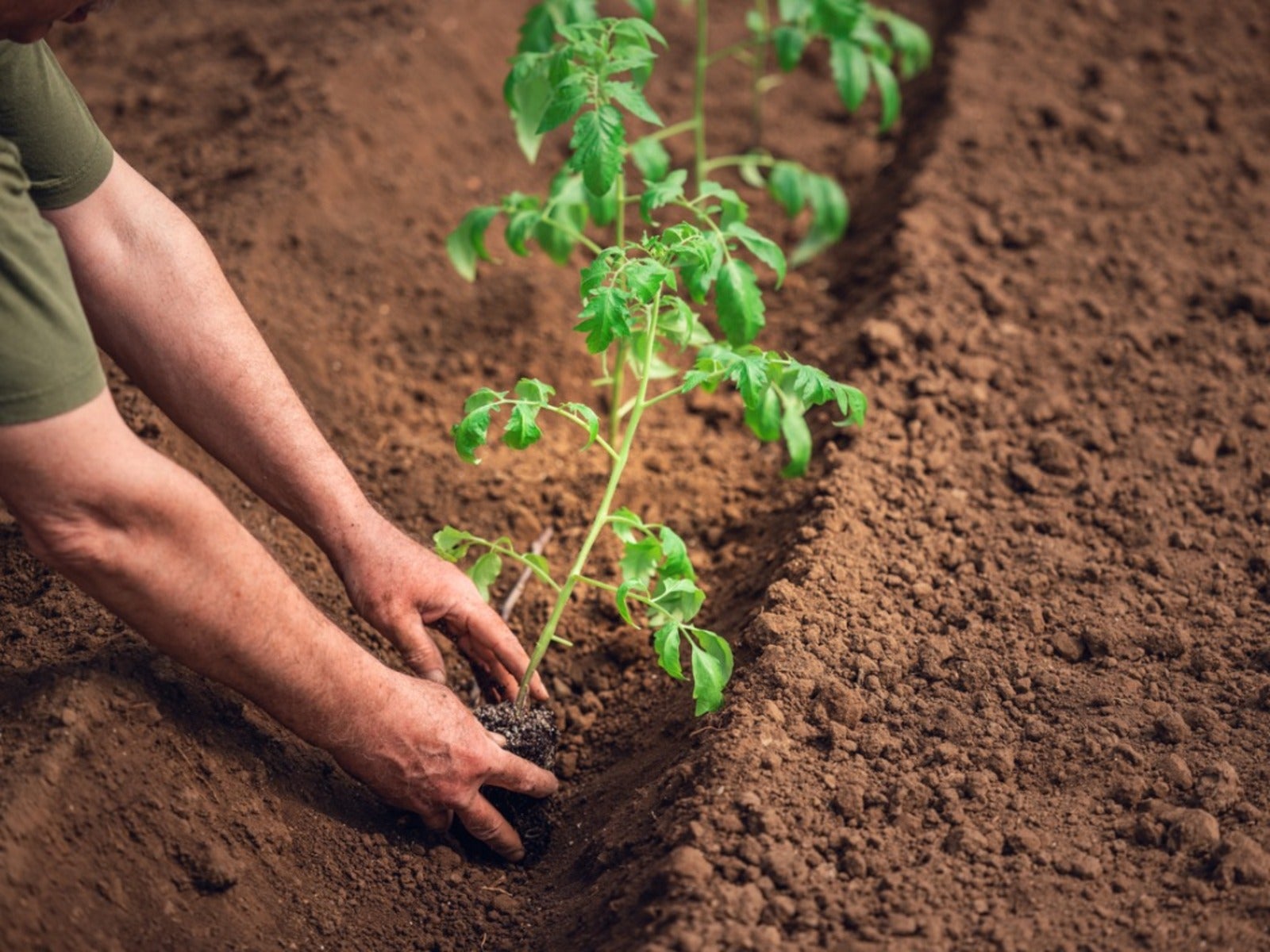Why Trench Planting Tomatoes Is The Best Way To Grow


Trenching tomatoes is an innovative method of planting America's favorite garden crop. It's a very easy technique to learn and is adaptable to many different gardening styles. What’s more, gardeners often end up with earlier and larger yields of delicious ripe tomatoes. Sound interesting? Here's what you need to know.
Benefits of Planting Tomatoes in Trenches
Traditionally, when gardeners transplant seedlings into the garden, they dig a hole and insert the root ball and stem of the plant vertically. This method works well for many types of garden crops including peppers and members of the brassica family. To avoid root rot, it's generally recommended to only plant these crops about an inch or two (2.5-5 cm) deeper than the top of their root ball.
Unlike peppers and cabbages, tomatoes are vining plants. They have the ability to easily sprout roots along their stems. Deep planting tomatoes is recommended as it creates a stronger root system. This leads to larger and healthier plants, which can produce more flowers and bigger fruit.
Yet, deep vertical planting of tomato seedlings in the spring exposes their roots to soil temperatures which may be cooler than those nearer the surface. This can delay the time needed for tomato plants to become established, bloom, and produce fruit. By using the trench method, tomatoes have the benefit of maximum soil-to-stem contact for better root development, plus the warmer soil temperatures found near the surface.
How to Plant Tomatoes Using the Trench Method
Learning how to plant tomatoes in the ground using the trench method is simple. Instead of digging a narrow, deep hole and planting tomato plants vertically, begin by digging a trench approximately 6 inches (15 cm) deep. If you are planting tomato seedlings in a row, you may wish to make the trench the entire length of the row.
If you plan to use tomato stakes or fencing to support your tomato plants, now is a good time to install these in order to avoid accidentally damaging the buried portion of the tomato seedlings. Tomato cages will have to wait until after the seedlings are planted, but marking the soil above the buried stem and root ball is recommended.
Next, prune the leaves and any suckers from the bottom two-thirds of the tomato seedling. Then lay the seedling horizontally in the trench at an angle. Use some of the soil removed from the trench to create a pillow which allows the leafy top portion of the seedling to remain above the soil level. If needed, line up the top of the plant with the tomato stakes which were inserted earlier.
Sign up for the Gardening Know How newsletter today and receive a free copy of our e-book "How to Grow Delicious Tomatoes".
If the soil is dry, you may wish to add water to the trench before backfilling with soil. Carefully return the excavated soil to the trench and gently pat over the buried stem to prevent breakage. It's also advisable to avoid stepping on or walking over this area. As with vertical planting, space the above-ground portion of the seedlings 18 to 36 inches (46-90 cm) apart.
Additional Tips for Trench Planting Tomato Seedlings
Although tomato trench planting results in earlier fruiting, there are drawbacks to this shallower method of planting. It's prudent to exercise care when weeding or hoeing near the area where the stem and root ball are buried. Likewise, shallow planting may mean more supplemental water is required. Here are a few more tips:
- Have the soil tested, and amend or fertilize as recommended.
- Plant tomato seedlings in a full sun location.
- Transplant seedlings when soil temperatures reach 60 degrees F (16 C).
- Transplant seedlings on a cloudy day or in the evening to prevent wilting.
- Allow 3 to 4 feet (1 m) between rows of tomatoes.
- Mulch to control weeds and retain soil moisture levels.
Finally, the trench method is an ideal solution for planting leggy tomatoes whose stems can't support the weight of new foliar growth. Simply remove all but the top few sets of leaves and bury the entire barren portion of the stem in the trench. The leggy stem will develop into a healthy root system, which in turn will support a productive tomato plant.

Laura Miller has been gardening all her life. Holding a degree in Biology, Nutrition, and Agriculture, Laura's area of expertise is vegetables, herbs, and all things edible. She lives in Ohio.